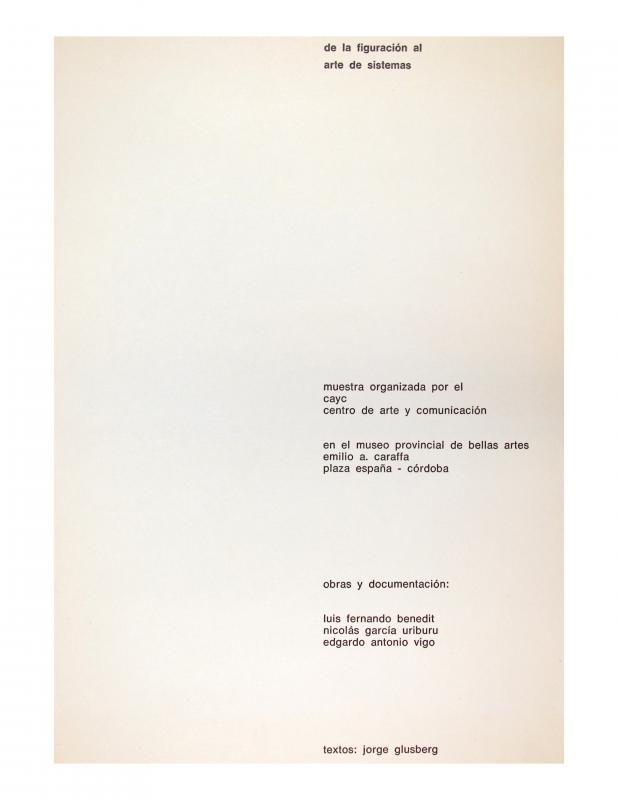Ever since it was founded, the CAYC (Centro de Arte y Comunicación), helmed by the cultural promoter, artist, and businessman Jorge Glusberg, was intended as an interdisciplinary space where an experimental art movement could flourish. The establishment of collaborative networks connecting local and international artists and critics played a key role in this process. The exhibitions shone a light on these exchanges, in which overviews of trends or individual artists introduced the innovations of international contemporary art and made Argentine and Latin American artists better known on the global scene.
It was, in fact, at the exhibition De la Figuración al Arte de Sistemas (Museo Emilio Caraffa, Córdoba, 1970) (doc. no. 761141) that Glusberg used the term for the first time in Argentina to describe a kind of art that “refers to processes rather than to the finished products of good art.” An art that does not consist of creating objects but of crafting an expression of reality; this process then becomes one of the artist’s materials. Researching events, taking part in social and cultural occasions, developing new ways to question the world. The emphasis of a sector of the art milieu in the Southern Cone expressing in political terms was just one of the ways in which to perform this task.
Glusberg issued an open invitation to Arte de Sistemas (1971), the exhibition that sought to consolidate the term and give it the stamp of legitimacy at a local level. This document includes a reproduction of the page from the exhibition catalogue that shows some of the works that Alain Kirili (1946–2021), the French-born artist who lived in New York, sent to the CAYC exhibition: forty-eight black-and-white photographs “that construct a system in which color, matter, space, and time, all have their own thickness.”

